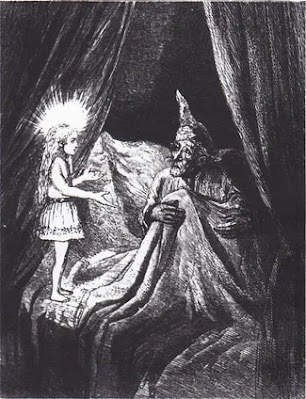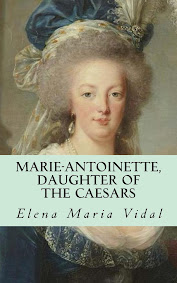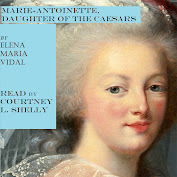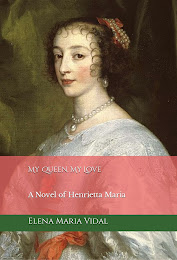The Bells of St. Mary's is often referred to as the film which most exemplifies the mythological Church of
pre-Vatican II days, the Church That Never Was, so to say. It is seen as idealizing priests and nuns and parish life when in reality, as we are continually being told, priests were abusive monsters and nuns were shrewish old hags. However, every time I see
The Bells of St. Mary's I am struck by how many things about the film resonate with my own experience of Catholicism over six decades. The nun friends that I have had laughed together just like those in the film, especially in the scene when the cat got inside Fr.
O'Malley's hat on the mantelpiece. And the striving of the parish to keep the school open is not unreal either.
It is always surprising how familiar some of the characters in the film are to me. Yes, when I went to parochial school there were some cranky old nuns. My former spouse has stories of his school days and encounters with grouchy teaching sisters that make one's hair stand on end. All the same, over the years I have known several nuns like Sr. Benedict, energetic, cheerful, and beautiful in every way. I have certainly encountered priests of the Fr.
O'Malley variety, full of blarney at times, but able to connect with people from all walks of life. And what rectory does not have the occasional eccentric characters associated with it, such as the St. Mary's housekeeper Mrs.
Breen, played to the hilt by the
pixillated Una O'Connor. "You don't know what it's like to be up to your neck in nuns," she warns Fr.
O'Malley, as he readies himself to embark on one of the most famous power struggles in
filmdom.
Bing Crosby is not half so annoying as he was in
Going My Way, the prequel of
Bells. The fact that Ingrid Bergman was not a raised a Catholic and was not an especially devout person is testimony to her superb acting ability. Her composed deportment is right on target, restrained without being stiff. Sr. Benedict is able to gently impose a sense of discipline and order on the children while at the same time letting them know that they are loved unconditionally.
I have known nuns just like her. She is based upon director
Leo McCarey's aunt, a nun who helped to build Hollywood's Immaculate Heart Convent before dying of typhoid fever.
Sr. Benedict and Fr.
O'Malley, like so many dedicated religious and clergy with whom I have been acquainted, interact with a variety of people with a plethora of problems, from the troubled young girl to the cranky old
Bogardus. The story is fictional, meant to be entertaining and light-hearted but it touches upon very real quandaries. Sr. Benedict, who after overcoming many obstacles saves the school, has to lose it by going away. She is heartbroken and finds it hard to give up her own will, thinking that Fr.
O'Malley has arranged her transfer on purpose. Discovering the truth at last helps her to accept everything that has happened in a spirit of faith. The look she gives Fr.
O'Malley before walking away, eyes full of tears but radiant with peace, contains in it an ocean of sacrifice. In that sense,
The Bells of St. Mary's is not only about the Church that
was, it is about the Church that
is, and that ever will be.
Share
 I loved this poem as a child. It still brings tears to my eyes.
I loved this poem as a child. It still brings tears to my eyes.








_(14593231638).webp)




















